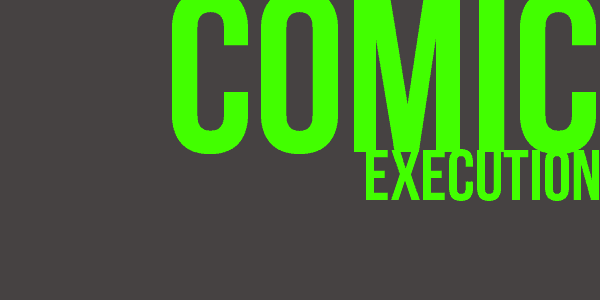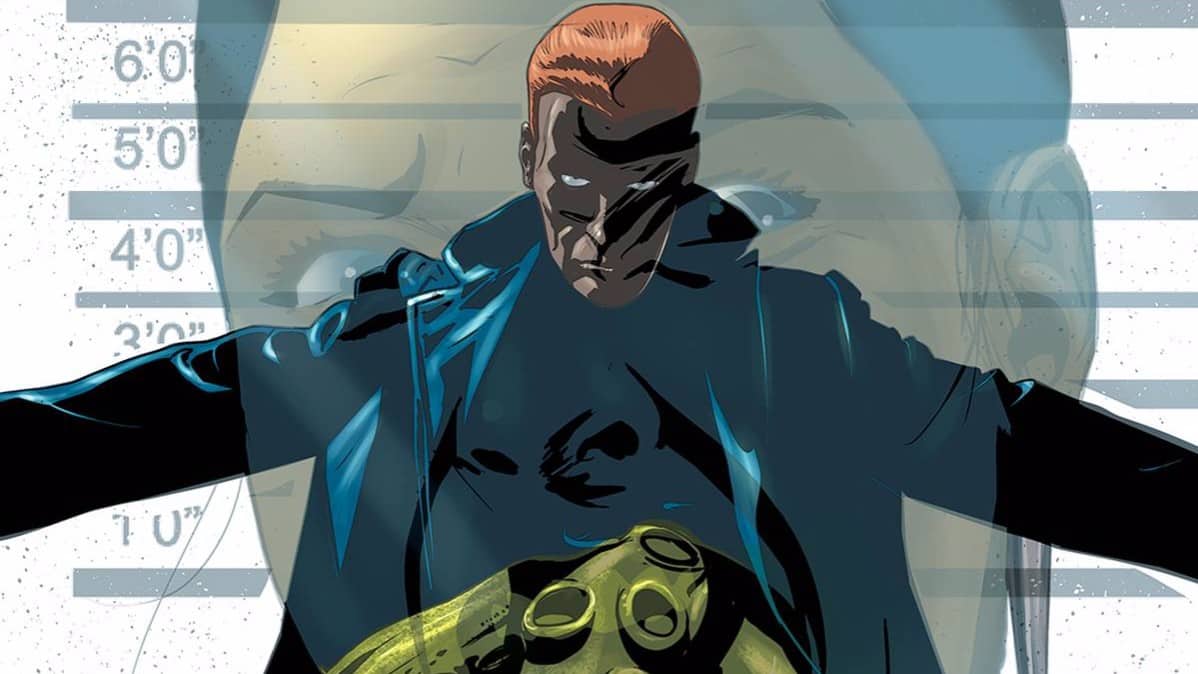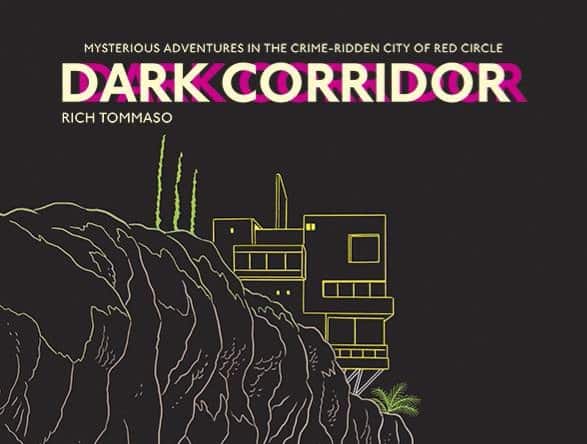
[Comic Execution] 10/17 – PROMETHEUS, THE EVIL WITHIN, THE STORYTELLER
The playlist to tonight’s column? Revocation‘s new brutal thrash metal masterpiece “Deathless.” Landing right smack in the middle of October, I have to mention how much energy this record instills in me. The thing about “Deathless” is that it marks an absolute highwater mark for Revocation, nailing the insanely technical flair they were previously known for while stepping up the songwriting a full notch, producing some of their most intense, melodic and catchy work since their inception. This isn’t a review because I’m a casual metal fan and that’s why I mention this album; outside a Dethklok album (or maybe High On Fire), “Deathless” truly embodies the best that modern metal has to offer. Listening to it is akin to snorting a line of demon cocaine off the butt of Satan itself.
So if this week’s column seems a little more aggressive than usual, you’ll know why.
PROMETHEUS: FIRE & STONE #2
Writer: Paul Tobin
Artist: Juan Ferreyra
Artist: Eduardo Ferreyra
Publisher: Dark Horse Comics
Price: $4 (Digital)
Let’s go ahead and talk for a minute about the ugly propaganda machine that is Ridley Scott. Dude is on a press tour for his “Let’s See If We Can Do Noah But Bigger” movie Exodus: Globs And Tings and somehow NOBODY has failed to bring up both the vaporous sequels to Blade Runner and Prometheus he can’t seem to stop going on about. Most directors get annoyed when interviewers ignore the movie they’re doing press for in favor of movies that don’t even exist yet but Scott just can’t resist. He’s apparently done with menacing people so everyone has translated that to “no xenomorphs in Prometheus 2” because controversial headlines. Prometheus star Noomi Rapace is going along with the party line, adding fuel to the fire by getting gods involved. Ridley Scott sure seems to have gods on the mind a lot lately but that’s understandable, given how old he is at this point. Dare I say he’s dealing with Lucas-itis?
What about Paul Tobin, writer of Prometheus: Fire and Stone? Has he rescued Prometheus from being consigned to prequel purgatory aka the bargain bin? Well, the second issue of Prometheus picks up with a new crew of xeno fodder stumbling onto a nest of the alien bastards, then fleeing predictably right into more danger before finally escaping… kind of. There’s a lot of mayhem that all feels a little too predictable; a conveniently unavoidable landbridge drops some expendables into an ocean full of alien sharks, a scene utterly devoid of suspense or horror thanks to its canny circumstances. It has zero impact on the story and exists entirely to up the body count, a cardinal sin in good sci-fi horror. After they escape, the story devolves, like the first issue, into a repeat of the movie, with one of the scientists discovering a journal explaining everything, which he then does. The story ends by tying in two key events from AvP: Fire and Stone, thus clarifying the chronology of the Fire and Stone series but also making Prometheus feel even more like an obligatory bridge to the rest of the titles.
Juan Ferreyra continues to be the best part of this comic. Early on, he actually nails the genuine terror a xenomorph should invoke as one drops from the darkness onto a hapless human and the way it looms over her in the dark is thrilling. The scenes of mayhem and carnage are both detailed and controlled, quite the achievement given how detailed the settings and characters are. There’s one panel that features a spacecraft boosting across a lake and it’s really some incredible artwork, thanks both to Juan’s careful eye and his brother Eduardo’s coloring assistance, the boosters themselves adding immensely to the dynamic punch of the scene. It would’ve been even more intense had letterer Nate Piekos bothered to add SFX to the image of a craft rocketing past the POV. Yet a few pages later, gunfire is generously accompanied by SFX? It seems like there’s not much consistency with the lettering in this issue.
I hate to say this but I’m done with Prometheus: Fire and Stone. It’s an uninteresting, dry story that treads the same ground as the movie and has almost no characters worth caring about so the multiple deaths hold no weight and again, it feels like this whole series is simply bridging the gap between the movie and the rest of the Fire and Stone titles. Juan Ferreyra’s art is great, really, but would be better served on a title that has more narrative power, instead it’s just meaningless eye candy. And at $4, I want more than eye candy.
THE EVIL WITHIN #1
Writer: Ian Edginton
Artist: Alex Sanchez
Colorist: Hi-fi Design
Publisher: Titan Books
Price: $4 (Digital)
I’ve been quite enamored of The Evil Within since it was announced. I love survival horror and The Evil Within started with a mission statement of taking the genre back to being about surviving (or not) horror and not the horror of survival (I’m looking at you, The Last Of Us). The opening barrage of videos revealed an old school sensibility not just in the gameplay but in the aesthetic; the menace wasn’t scary men with weapons or blank-faced lurkers in business suits but horribly mutilated half-humans fused with jagged industrial machinery out to murder you in the most grimace-inducing ways. There was atmosphere, buckets of gore and almost no plot, a refreshing change of pace from Resident Evil‘s perpetually overwrought narratives and Silent Hill‘s mind-numbing psychological head games. A comic version? I had to investigate. The verdict is still out on the game but let’s find out it make for a worthy comic.
We’ve seen the name Ian Edginton around here before, back in 2013, when we reviewed his Vertigo-published post-apocalyptic urban fantasy Hinterkind, an imaginative and fun riff on the classic mythological-creatures-are-real trope that was weighed down heavily by Vertigo’s sadistic policy of having ads on EVERY OTHER PAGE of their publications. He brings his energetic, direct style to The Evil Within, kicking things off with a quick introduction to the heroine, compactly summarizing her background in a couple of pages before dropping her into a nightmare with the typical “car breaks down in the middle of nowhere” cliche, much like how the Silent Hill games usually begin (no coincidence, given that The Evil Within was created by the man responsible for Silent Hill). It’s not long before she’s fleeing in terror from unnamed horrors, accompanied by some random guy. Almost immediately, shit gets weird, she starts seeing people who shouldn’t be there and collapsing into blackouts. Did I mention the concept was created by the Silent Hill guy? Yeahhhh… From that point on, it’s a hurtling scramble from one nameless locale to another, perpetually hounded by increasingly terrifying monsters, often punctuated by equally elevated doses of surrealism. Edginton lets the exposition bleed in at the edges of the action, making sure that every attempt by the heroine to figure out what exactly IS going on fails by merit of oh hey more hellish abominations! There’s a break for a few pages that drops some more backstory in a manner that might normally feel clumsy but, thanks to Edginton’s prowess, is perfectly paced and timed. The last page is a humdinger and really makes me curious as to where this story is going.
The art is handled by Alex Sanchez, a jack of all trades whose work I’ve never ran into before. He’s got a solid eye for detail and the kind of versatility a horror comic like this needs. What I like is how his lines are both coherent and expressive, his backgrounds conveying nihilistic bleakness and grimness without distracting from the action. His creatures look great most of the time but there some panels where he’s obviously overreaching and the visceral horror that the monsters should elicit disappears into the muddiness of his lines. My other complaint is that his page margins are several centimeters too generous, giving the panels a squashed feeling, even if it does contribute to the bite-sized quickness of the read. Colorist Hi-Fi Design has a very diverse set of tricks to help augment the brutal tone of the visuals; he slathers every page in grimy, unsettling textures, effectively elevating what is obviously a rather limited color palette, though not one of his making; the reliance on dirty blue-gray and rusty crimson is lifted directly from the game. Despite being rather cheap (or efficient if you’re kind), the art for The Evil Within all mixes together and works remarkably well, a sum more than its parts. What stands out the most, delightfully, is Comicraft’s lettering; from the charming “ting-ting-ting” of an empty fuel gauge light to the signature gouging of a jagged metal edge deep across a concrete wall, it’s effective, invisible and extremely professional, showing up everywhere it should be with quality visual flair and spot-on placing.
The Evil Within #1 is a solid 21 pages of comic plus several full page pinups of iconic baddie Boxhead/The Keeper for $4. Is it worth that price, though? Is it a premium comic, that’s the question. Taken in comparison to, say, Silent Hill Downpour: Anne’s Story or Wytches, it doesn’t quite match up. But let’s keep in mind the great context of the comic; as a companion to the video game, it’s actually quite interesting, giving us a female protagonist who already seems more interesting than the one from the game, plus it does have the merit of seeing the game’s computer-generated art as hand-drawn, which Sanchez does well enough to justify seeing. My verdict: The Evil Within gets to survive to the next round but if the story doesn’t reel me in a little harder or if the art takes a dip in quality or the page count drops, I’ll have to show my own evil within.
 THE STORYTELLER: WITCHES #2
THE STORYTELLER: WITCHES #2
Writer: Kyla Vanderklugt
Artist: Kyla Vanderklugt
Publisher: Archaia Entertainment
Price: $4 (Digital)
Remember my review of The Storyteller: Witches #1 in which I basically wrote several paragraphs slobbering like a happy puppy all over writer/artist SM Vidaurri’s incredible work and ended it by bemoaning the fact that he wasn’t doing the next issue then basically putting down this issue’s artist Kyla Vanderklugt by implying that she wouldn’t compare to Vidaurri’s efforts? I feel very bad about that.
Kyla Vanderklugt has never had a standalone story published outside an anthology. She’s a very fresh talent. Like Vidaurri, she handles both the writing and the art for this story, so I’ll have to address the comic appropriately. As with Witches #1, the story is inspired heavily by folklore. This one could be from any region in the world but Kyla lends it an Asian aesthetic that helps it stand out from the first issue. Unlike that story, this one revolves around a boy and his encounter with the titular Snow Witch. One of the things that surprised me about this story is how tragic it is; it begins with the death of an old man and ends with a mother being forced to leave her child and devoted husband. A kid reading this might be a little upset by how melancholy it is but thankfully Kyla’s art should easily cushion that pain. The format of Witches #2 is unique; you have to turn the book to read it properly, presenting itself in landscape mode, which is an absolutely brilliant way of letting younger readers see that you don’t have to tell a story the way everyone else does it. This format lends the already impressionistic art a lush, widescreen feel, though digitally it has a choppy quality, since you can’t view two pages at once. In print, though, it’s positively staggering.
The story has a hard lesson to be learned about being sympathizing with everyone, regardless of your impression of them. It’s a very relevant lesson right now, culturally speaking; there’s a huge conflict right now in the video game industry in which progressives are struggling to reconcile their desires to move the medium forward with a disappointingly potent conservative backlash that has reached absurd levels of intensity. Both sides unequivocally view each other as blinded, ignorant and unsympathetic and regardless of whether that’s true, it’s a shame the only resolution has been for everyone to wait for the anger and hatred to dissipate. And this is just a microcosmic example. The final note of the tale admonishes fathers to imbue their sons with exactly the respect and open-mindedness that is so sorely lacking right now. And it’s significant that the Snow Witch is a representative of the feminine, though I’m sure Kyla doesn’t want to limit her message specifically to the gender-driven conflicts, relevant as that might be.
But lest you think The Storyteller: Witches #2 is a cerebral sermon that kids just won’t appreciate, let me elaborate on what they will immediately grasp, and that’s how incredible Kyla’s artwork is. Where SM Vidaurri’s had a charming, olde-tyme simplicity, hers is reach-out-and-touch expressionistic, her characters delicately shaded and richly hued, every panel bathed in soft but accurate colors. There’s still simplicity here too, but of a different kind, more composed and thought-out, with notes of symmetry that a mature reader would appreciate. Any fan of Miyazaki will see his influence here, though Kyla probably is aiming more for classical Japanese art. Regardless, kids unfamiliar with the aesthetic will be entranced and older readers will appreciate its subtlety.
Yet again, The Storyteller: Witches delivers one of the most compelling reasons to buy a kids’ book, even if you’re an adult; if you don’t feel tears coming on as you are absorbed into this rich world of Kyla’s, I would be worried about you, as it seriously tugs at the heartstrings firmly, assisted hugely by Kyla’s great art. I can honestly say that Kyla Vanderklugt has handily met the high bar that SM Vidaurri set in the first issue but, by doing the comic her own way and having a message that’s more than simply a lesson but a relevant commentary, she’s made this series a must-have for comic book readers of all ages.



